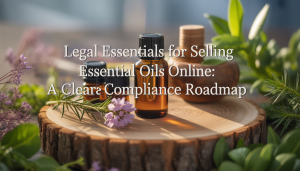Essential oils have gained popularity in recent years as natural remedies for humans. Some people may wonder if essential oils are also safe and beneficial for dogs. Using the proper essential oils correctly can provide some benefits, but others may be harmful to canines. This article explores what essential oils are suitable for dogs.
How Essential Oils Work
Essential oils are extracted and concentrated from plants like flowers, herbs, and trees. The oils contain the plant’s aroma, flavors, and active compounds. When used properly, some essential oils can provide physical and mental benefits.
For humans, essential oils are usually diluted with a carrier oil and applied to the skin or diffused into the air. The molecules enter the bloodstream through the skin or nasal passages and interact with the limbic system, which controls emotions and memories. This is why some essential oils help promote relaxation, sleep, and other benefits in people.
The effects of essential oils on dogs have not been as extensively researched. However, it appears that when used correctly, some essential oils may provide similar benefits for canines as they do for humans. Always consult your veterinarian before using any essential oil on your dog.
Dangers of Essential Oils for Dogs
While some essential oils are safe for dogs, many carry significant risks and should be avoided. Here are some of the main dangers:
- Toxicity: Oils like tea tree, pennyroyal, and wintergreen are toxic to dogs and can cause poisoning. Even small amounts can be dangerous.
- Skin irritation: Citrus and peppermint oils may irritate a dog’s sensitive skin when applied topically. This can cause redness, itching, and inflammation.
- Respiratory issues: Diffusing oils into the air can irritate a dog’s airways or exacerbate respiratory conditions like allergies or asthma.
- Ingestion: Dogs may be tempted to lick oil off their fur or ingest it by accident. Many oils can cause stomach upset, vomiting, or internal issues if swallowed.
- Hormonal effects: Some oils like lavender and tea tree have hormone-like effects and can disrupt your dog’s endocrine system. This can affect reproduction and growth.
Always keep oils safely out of your dog’s reach and dilute appropriately before use. Monitor for any signs of irritation, discomfort, or distress. Discontinue use if any appear.
Essential Oils Safe for Dogs
The following essential oils are typically considered safe for dogs when used properly under veterinary guidance:
Lavender
Lavender essential oil has calming, soothing properties. For dogs, it may ease anxiety from situations like thunderstorms, car travel, or separation. Dilute lavender oil and lightly spritz on bedding or use in a diffuser to create a relaxing environment. Never apply undiluted oil directly on your dog.
Chamomile
Like lavender, chamomile has a mild sedative effect on the nervous system. It can relieve stress and calm restless or hyperactive dogs when diffused into the air or diluted in a spritz. Chamomile may also soothe skin irritation.
Peppermint
Peppermint’s refreshing aroma can stimulate alertness. It may relieve nausea and upset stomach when very diluted and applied to the abdominal area only. Never use peppermint oil undiluted or near your dog’s face, as it can trigger respiratory distress.
Frankincense
Frankincense oil has anti-inflammatory, analgesic, and anxiety-reducing properties. It may help relieve pain, improve mobility, and reduce nighttime disturbances when diluted and applied topically to affected areas only.
Copaiba
Distilled from tree resin, copaiba essential oil may have antibacterial and anti-inflammatory effects. It can be diluted and applied to minor skin irritations. Copaiba may also support the respiratory and immune systems when diffused.
Helichrysum
The helichrysum plant has natural wound healing abilities. Helichrysum oil can reduce swelling, pain, and inflammation when diluted and applied around minor cuts, scrapes, or insect bites on dogs.
Sandalwood
Sandalwood oil creates a pleasant, woody aroma that can help relax both humans and canines. It is gentle enough to use topically when diluted to soothe dry or itchy skin patches.
How to Use Essential Oils Safely on Dogs
Read and follow all label instructions carefully if using an essential oil product formulated specifically for dogs. When diluting pure oils at home, follow these guidelines:
- Always consult your veterinarian before using any new essential oil, and immediately if any irritation develops.
- Select high-quality, 100% pure essential oils safe for dogs. Do not use oils labeled “for aromatic use only.”
- For topical use, dilute oils with a dog-safe carrier oil like coconut, almond, or hemp seed oil. A typical dilution is 0.5 to 1% oil or 1 to 3 drops of essential oil per ounce of carrier.
- For diffusing, restrict to short intervals of 30 minutes or less per use. Ensure proper ventilation and allow your dog to leave the area if desired.
- Limit use to once or twice daily for no more than a week unless under veterinary guidance.
- Bathe and/or dilute further if skin becomes red, inflamed, or irritated. Discontinue use if irritation persists.
- Keep all oil bottles securely closed and out of your dog’s reach to prevent accidental ingestion.
- Introduce new oils slowly and one at a time to check for any negative effects.
- Be extra cautious with elderly dogs, pregnant/nursing dogs, and dogs with health conditions.
Though some essential oils do have therapeutic potential for dogs, always exercise caution and consult your veterinarian before introducing anything new. Monitor your dog closely for any adverse effects when trying an oil and don’t force them to stay in an area if they appear bothered by diffused aromas. With judicious use, essential oils can be an additional way to support your dog’s health and well-being.













